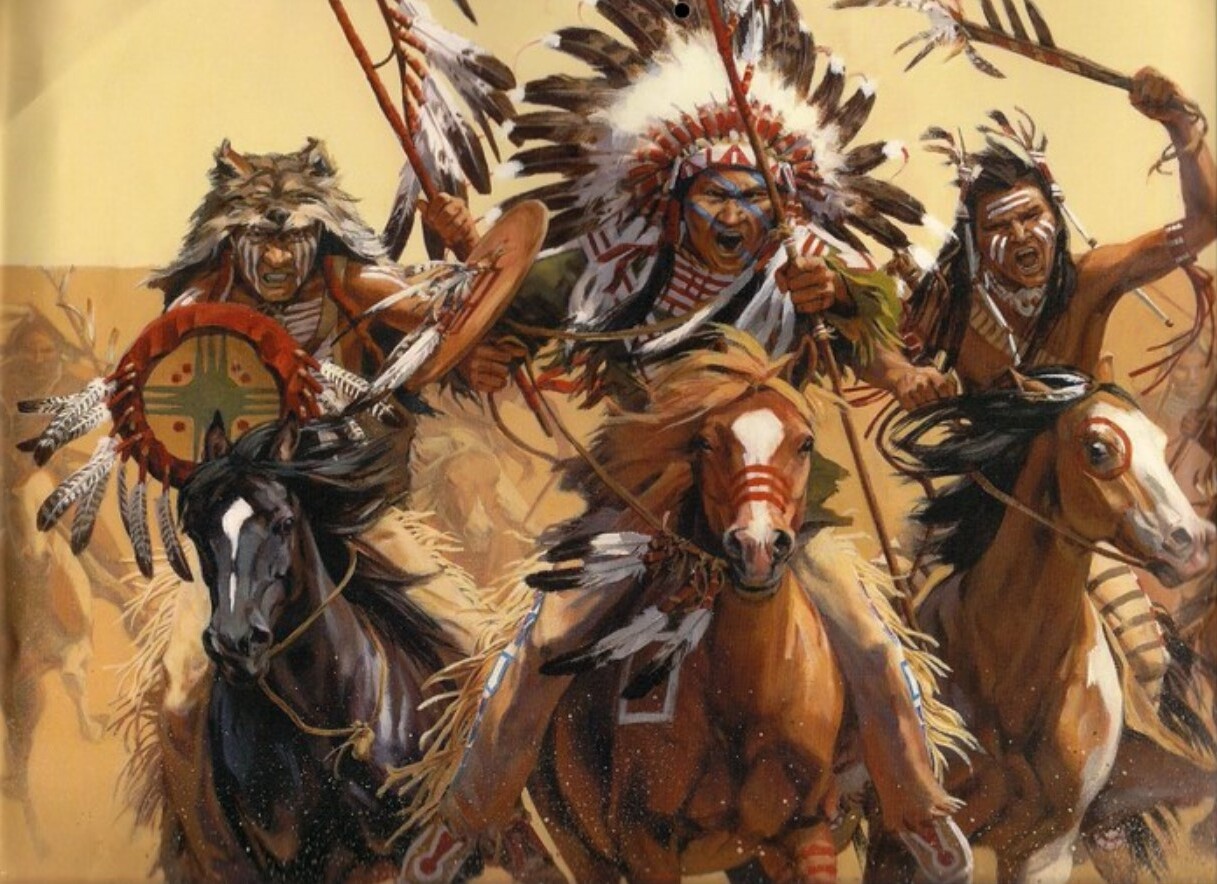
Native American warriors hold a significant place in history, embodying bravery, skill, and resilience. These warriors were not just fighters; they were protectors of their tribes, culture, and land. Did you know that many of their tactics and strategies are still studied in military academies today? From the legendary Geronimo to the fierce Crazy Horse, each warrior had unique stories and contributions. Their weapons, such as the tomahawk and bow, were crafted with precision and care. Understanding their way of life offers a glimpse into a rich heritage filled with honor and tradition. Ready to learn more about these incredible figures? Let's dive into 41 fascinating facts about Native American warriors!
Key Takeaways:
- Native American warriors were more than just fighters - they were protectors, providers, and spiritual leaders, deeply respected in their communities for their bravery and contributions.
- The legacy of Native American warriors lives on, with their influence seen in modern military service, cultural preservation, and the symbols and traditions that continue to be honored today.
The Role of Native American Warriors
Native American warriors played a crucial role in their communities. They were not only protectors but also held significant cultural and spiritual responsibilities.
- Native American warriors were often seen as the protectors of their tribes, defending against external threats.
- Many tribes had warrior societies, which were groups dedicated to training and maintaining combat skills.
- Warriors were also responsible for hunting, providing food for their communities.
- They often participated in spiritual rituals, believing that their prowess in battle was connected to their spiritual strength.
- Some tribes, like the Comanche, were known for their exceptional horse-riding skills, which gave them an advantage in battle.
Famous Native American Warriors
Throughout history, several Native American warriors have become legendary for their bravery and leadership.
- Sitting Bull, a Hunkpapa Lakota leader, is famous for his role in the Battle of Little Bighorn.
- Geronimo, an Apache leader, resisted Mexican and American expansion into Apache lands for decades.
- Crazy Horse, another Lakota leader, was instrumental in the defeat of General Custer at Little Bighorn.
- Tecumseh, a Shawnee leader, attempted to unite various tribes to resist American expansion.
- Chief Joseph of the Nez Perce is remembered for his leadership during the Nez Perce War.
Weapons and Tactics
Native American warriors used a variety of weapons and tactics that were well-suited to their environments and combat needs.
- Bows and arrows were the primary weapons for many tribes, valued for their range and accuracy.
- Tomahawks, small axes, were used both as tools and weapons.
- Spears and lances were common, especially among tribes that hunted large game like buffalo.
- Some tribes used war clubs, which were heavy, blunt weapons designed to inflict maximum damage.
- Guerrilla tactics, including ambushes and hit-and-run attacks, were commonly employed to outmaneuver larger forces.
Warrior Training and Initiation
Becoming a warrior required rigorous training and often involved significant rites of passage.
- Young boys were trained from an early age in skills like archery, tracking, and stealth.
- Many tribes had initiation rites that young men had to complete to be considered warriors.
- Vision quests, where young men sought spiritual guidance, were a common part of warrior initiation.
- Warriors often had to prove their bravery by performing acts of courage, such as counting coup, which involved touching an enemy without harming them.
- Physical endurance was highly valued, with warriors undergoing tests of strength and stamina.
Cultural Significance
Warriors held a special place in Native American culture, often symbolizing the ideals and values of their people.
- Warriors were often celebrated in songs, stories, and dances that honored their bravery and achievements.
- Many tribes believed that warriors had a special connection to the spiritual world, receiving guidance and protection from spirits.
- Warrior societies often had elaborate regalia, including headdresses, that symbolized their status and accomplishments.
- Tattoos and body paint were commonly used to signify a warrior's achievements and spiritual beliefs.
- The concept of the warrior was deeply intertwined with the tribe's identity and sense of community.
Women Warriors
While often overlooked, women also played significant roles as warriors in some Native American tribes.
- The Apache had female warriors who fought alongside men in battles.
- Buffalo Calf Road Woman, a Northern Cheyenne, is credited with saving her brother during the Battle of the Rosebud.
- Women warriors often took on leadership roles, especially when male warriors were killed or incapacitated.
- Some tribes, like the Crow, had specific roles for women in their warrior societies.
- Female warriors were often celebrated and respected for their bravery and contributions.
Modern-Day Warriors
The legacy of Native American warriors continues today, with many serving in the military and participating in cultural preservation.
- Native Americans have the highest per capita enlistment rate in the U.S. military.
- Many modern Native American veterans are involved in efforts to preserve and promote their cultural heritage.
- Powwows and other cultural events often include ceremonies honoring veterans and warriors.
- Some tribes have established warrior societies that continue to uphold traditional values and practices.
- Native American veterans are often seen as modern-day warriors, carrying on the legacy of their ancestors.
Symbols and Meanings
Various symbols and artifacts are associated with Native American warriors, each carrying deep meanings.
- Eagle feathers were often given to warriors as a sign of their bravery and achievements.
- War bonnets, made of eagle feathers, were worn by Plains warriors as a symbol of their status.
- Shields were not only used for protection but also decorated with symbols representing the warrior's spiritual beliefs.
- Dreamcatchers were sometimes used by warriors to protect them from negative spirits and dreams.
- Totem poles often included carvings that represented the deeds and lineage of great warriors.
The Enduring Legacy
The influence of Native American warriors extends beyond their historical roles, impacting modern culture and identity.
- Many Native American communities continue to honor their warrior traditions through storytelling, ceremonies, and education.
The Legacy Lives On
Native American warriors left an indelible mark on history. Their bravery, skills, and strategies continue to inspire. From the fierce Comanche horsemen to the strategic minds of the Iroquois, these warriors shaped their cultures and defended their lands with unmatched valor. Their stories, often passed down through generations, remind us of their resilience and strength.
Today, many Native American communities honor their warrior ancestors through ceremonies, storytelling, and preservation of traditions. These warriors' legacies are not just historical footnotes but living parts of their cultures. Understanding their contributions helps us appreciate the rich tapestry of Native American history.
So, next time you hear tales of Native American warriors, remember their enduring spirit and the lessons they offer. Their legacy is a testament to courage, honor, and the unyielding will to protect their people and heritage.
Frequently Asked Questions
Was this page helpful?
Our commitment to delivering trustworthy and engaging content is at the heart of what we do. Each fact on our site is contributed by real users like you, bringing a wealth of diverse insights and information. To ensure the highest standards of accuracy and reliability, our dedicated editors meticulously review each submission. This process guarantees that the facts we share are not only fascinating but also credible. Trust in our commitment to quality and authenticity as you explore and learn with us.


